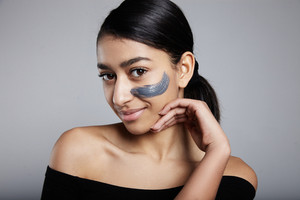There are many different types of acne, and they all require different treatments. Some acne is caused by bacteria that lives on the surface of the skin, while other acne is caused by toxins that can be found deep within the skin. If you want to know how to treat acne effectively, you’ll first need to know what type of acne you have.
If you have cystic acne, your acne will usually start in the area where the sebaceous glands are located. These glands produce oil, which helps keep the skin’s surface clean. When these glands become clogged with oil, they release the oil into the pores. This makes the pores too small to hold the bacteria, which then infects the surrounding tissue. Cystic acne can also result from the build up of dead skin cells, which can cause the follicles to become infected.
Another type of acne is called nodular acne, which often appears on the nose, chin, or cheeks. In this case, the infection is usually caused by a bacterium called Propionibacterium acnes. P. acnes lives in the pores, and when it is allowed to multiply, it begins to destroy the tissue surrounding the pore. The pus produced by P. acnes is responsible for the redness and swelling that occurs with nodular acne. Nodular acne can also occur in areas where there is not much sebaceous gland activity, such as the chest, arms, or back.
Rosacea is another type of acne that can appear in the facial area. Rosacea is characterized by the appearance of blood vessels in the skin. These blood vessels may become enlarged and red, or they may become dilated and swollen. Rosacea can also cause the skin to become sensitive to light, which makes the skin look flushed. This type of acne can affect both men and women, and it tends to occur more frequently in older individuals.
Acne that occurs in the chest area is known as “acne rosacea”. It is usually associated with the growth of bacteria, but it can also be caused by the presence of certain chemicals, including ammonia, which can cause the skin to become inflamed. The skin on the chest can become very sensitive, so it is important to wear a shirt that covers the chest area if you suffer from acne rosacea.
Some acne patients experience outbreaks on the face, neck, chest, back, shoulders, and upper arms. This is known as acne vulgaris. Although it is often referred to as acne, this type of acne is actually a form of acne rosacea. In addition, acne vulgaris is caused by the same bacteria that causes acne rosacea. However, acne vulgaris does not involve the formation of blood vessels in the skin, which is why it is often referred to as “non-rosacea” acne.
Pimples can also develop on the face, back, and shoulders. This is known as acne conglobata, and it is caused by the overproduction of sebum by the sebaceous glands. This type of acne is often accompanied by a fever, sore throat, and general malaise. It is also accompanied by an oily discharge, and the pimples tend to be very painful.

Finally, acne can also develop in the area below the breasts, known as “acne under the breast”. This type of acne is caused by the same bacteria as acne vulgaris. The difference between acne under the breast and acne vulgaris is that the former involves only the area below the breast. The bacteria that causes acne under the breast produces a toxin that blocks the blood vessels in the area, which makes the skin appear red and swollen. This type of acne is extremely difficult to treat, because it can lead to scarring.

[…] you are looking for an acne treatment method that does not involve the use of medication, you may want to consider one of the […]